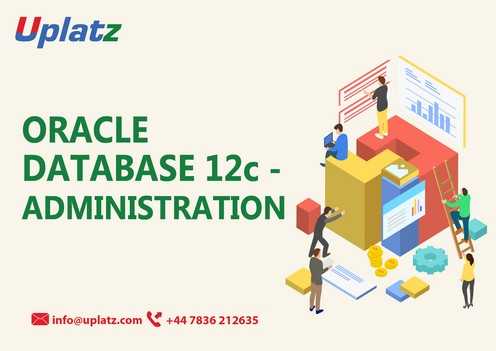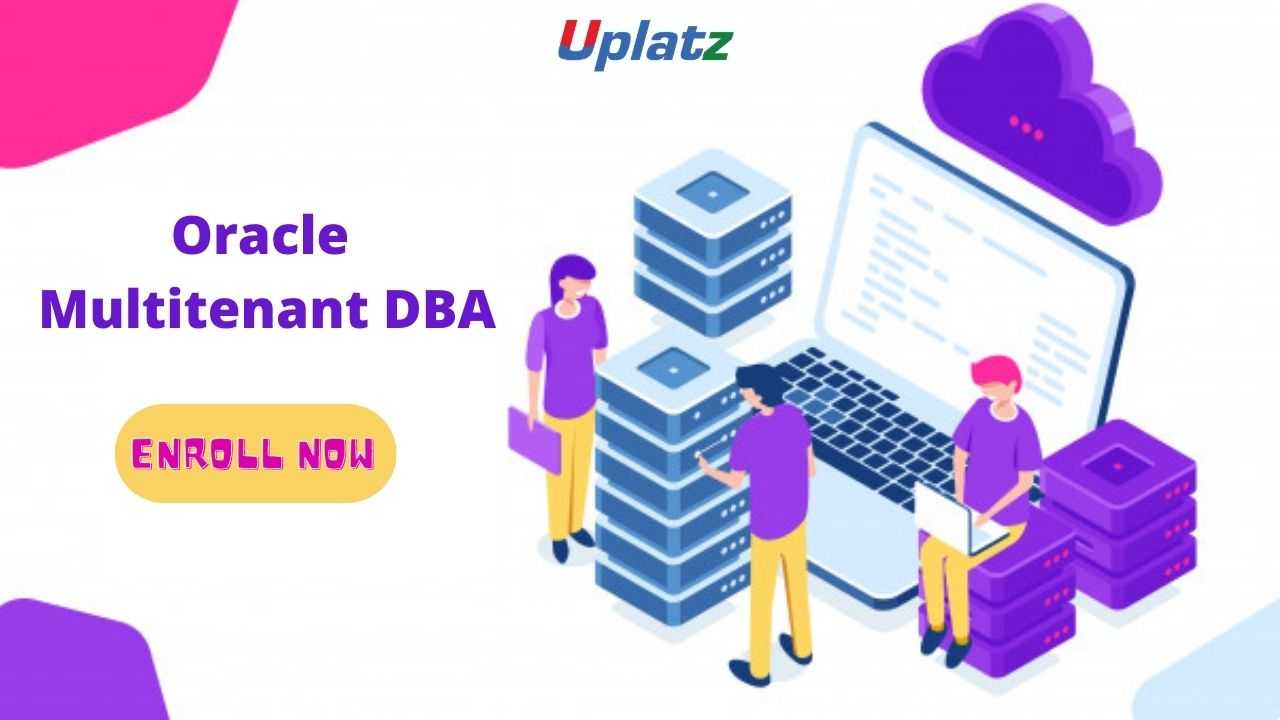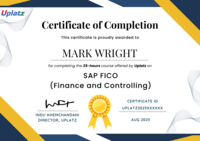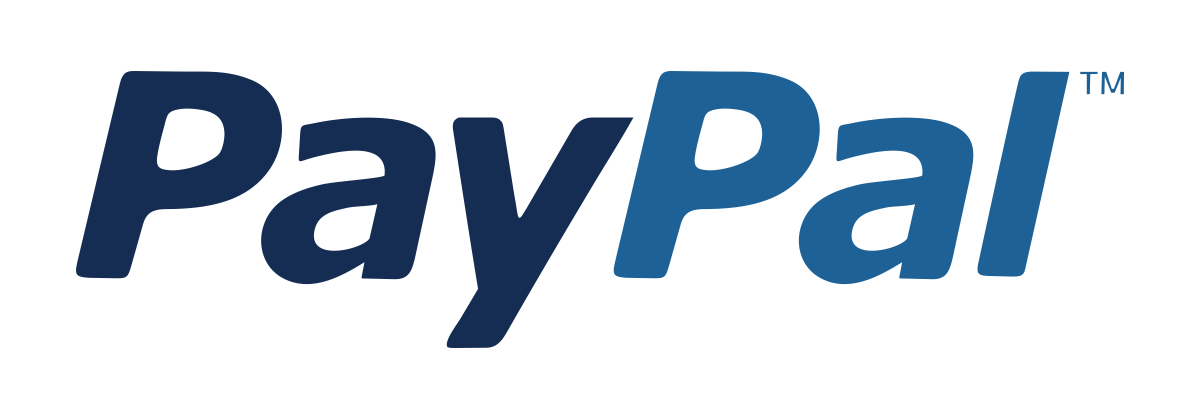Career Path - Database Administrator
Learn Database Administration from the scratchPreview Career Path - Database Administrator course
Price Match Guarantee Full Lifetime Access Access on any Device Technical Support Secure Checkout Course Completion Certificate 52% Started a new career
BUY THIS COURSE (
52% Started a new career
BUY THIS COURSE (GBP 32 GBP 99 )-
 69% Got a pay increase and promotion
69% Got a pay increase and promotion
Students also bought -
-

- SQL Programming with MySQL Database
- 8 Hours
- GBP 12
- 4562 Learners
-

- Oracle DBA
- 10 Hours
- GBP 12
- 478 Learners
-

- Oracle Multitenant DBA
- 10 Hours
- GBP 12
- 22 Learners

Courses included in the Database Administrator Career Path program
1) Oracle DBA
2) Oracle Multitenant DBA
3) SQL Programming with MYSQL Database
4) SAS Admin
5) SAP HANA Admin
Who is Database Administrator
Database administrators (DBAs) are primarily responsible for specific databases in the subsystem. In some companies, DBAs are given the special group authorization, SYSADM, which gives them the ability to do almost everything in the database subsystem and gives them jurisdiction over all the databases in the subsystem.
The DBA creates the hierarchy of data objects, beginning with the database, then tablespaces, tables, and any indexes or views that are required. This person also sets up referential integrity definitions and any necessary constraints. The centralization of data and control of access to this data is inherent to a database management system. One of the advantages of this centralization is the availability of consistent data to more than one application. As a consequence, this dictates tighter control of that data and its usage.
Roles & Responsibilities of a Database Administrator
1).Deciding the hardware device - Depending upon the cost, performance and efficiency of the hardware, it is DBA who has the duty of deciding which hardware device will suit the company requirement. It is hardware that is an interface between end-users and database so it needed to be of the best quality.
2).Managing Data Integrity - Data integrity should be managed accurately because it protects the data from unauthorized use. DBA manages the relationship between the data to maintain data consistency.
3).Tuning Database Performance - Database performance plays an important role in any business. If the user is not able to fetch data speedily then it may loss company business. So by tuning a modifying SQL commands a DBA can improve the performance of database.
4).Database Design - The logical design of the database is designed by the DBA. Also a DBA is responsible for physical design, external model design, and integrity control.
5).Monitoring Performance - If the database is working properly then it doesn’t mean that there is no task for the DBA. Yes f course, he has to monitor the performance of the database. A DBA monitors the CPU and memory usage.
6).Decides validation checks on data - DBA has to decide which data should be used and what kind of data is accurate for the company. So he always puts validation checks on data to make it more accurate and consistence.
Uplatz provides this end-to-end training on Database Administrator Career Path to make you well-versed with the leading tools & technologies in this area and to help you become a successful DBA.
Course/Topic 1 - Oracle 21c DBA - all lectures
-
Episode 1 - Installation of Oracle Linux 8 on Oracle VM
-
Episode 2 - Introduction to Oracle 21c Database
-
Episode 3 - Oracle 21c Architecture
-
Episode 4 - Practice 1 - Creating a CDB
-
Episode 5 - Practice 2 - Creating PDBs from the Seed
-
Episode 6 - Practice 3 - Performing Basic CDB Administration Tasks
-
Episode 7 - Practice 4 - Managing Common and Local Users
-
Episode 8 - Practice 5 - Backup and Recovery in CDB and PDBs
-
Episode 9 - Practice 6 - Flashback and Point-in-time Recovery
Course/Topic 2 - Oracle DBA - all lectures
-
This video comprehends the terms Oracle Database which is an object-relational database management system developed and marketed by Oracle Corporation. Oracle Database is commonly referred to as Oracle RDBMS or simply Oracle.
-
This topic will cover, DBCA which can create Standby Databases directly, but with some restrictions, like only for Single Instance Databases and only non-container Databases.
-
In this tutorial, you will learn how to use the Oracle create user statement to create a new user in the Oracle database. The create user statement allows you to create a new database user which you can use to log in to the Oracle database.
-
In this video you will learn about the an Oracle database which is made up of physical and logical structures. Physical structures can be seen and operated on from the operating system, such as the physical files that store data on a disk.
-
In this tutorial you will know about the Oracle Database creates and manages information that is used to roll back, or undo, changes to the database. Such information consists of records of the actions of transactions, primarily before they are committed. These records are collectively referred to as undo.
-
In this video you will learn about the Oracle Flashback Technology which is a group of Oracle Database features that let you view past states of database objects or to return database objects to a previous state without using point-in-time media recovery.
-
In this tutorial you will learn about the installing Oracle Database, which is a fully functional database with a client/server network environment that has been minimally configured. This chapter helps you configure your server network.
-
In this tutorial we will learn about the Locking which protect table when several users are accessing the same table. Locking is a concurrency control technique in oracle. It helps in data integrity while allowing maximum concurrency access to data. Oracle offers automatic locking whenever situation requires.
-
In this video tutorial you will learn about the Auditing which is the monitoring and recording of configured database actions, from both database users and non-data base users.
-
In this session you will learn about the Oracle Data Pump technology which enables very high-speed movement of data and metadata from one database to another.
-
This tutorial teaches you about the Backup and recovery procedures which protect your database against data loss and reconstruct the data, should loss occur. The reconstructing of data is achieved through media recovery, which refers to the various operations involved in restoring, rolling forward, and rolling back a backup of database files.
-
In this video you will learn about the backup recovery scheme which you devise for an Oracle database, operating system backups of the database's datafiles and control files are absolutely necessary as part of the strategy to safeguard against potential media failures that can damage these files.
-
This tutorial teaches you the Recovery processes which are dependent on the type of failure that occurred, the structures affected, and the type of recovery that you perform. If no files are lost or damaged, recovery may amount to no more than restarting an instance. If data has been lost, recovery requires additional steps.
-
This session teaches you the Recovery Manager (RMAN which is an Oracle Database client that performs backup and recovery tasks on your databases and automates administration of your backup strategies. It greatly simplifies backing up, restoring, and recovering database files.
-
In this video you will learn about the Oracle offers which is a wide range of migration services to help you optimize your usage of Oracle technology. Through the use of tools, resources, and proven best practices, Oracle can provide support for migrating from legacy or non-Oracle technologies to Oracle.
Course/Topic 3 - Oracle Multitenant DBA - all lectures
-
In this tutorial you will provides an overview of the Oracle Database DBA from which you will get to know about the multitenant which represents one of the biggest architectural changes in the history of the Oracle database.
-
This video describes step by step process of setting up Oracle Linux 7.8 in Oracle VirtualBox. This is the exactly same method we use every-time when we have to create a VM and practice Oracle.
-
In this video we will show you how to properly install Oracle Database 19c software. Just to make the installation less complex and easy to understand we create simple sections.
-
This tutorial shows you how to create the Container Database (CDB) and non-container database with a typical configuration. You can also create a non-CDB either automatically or manually. Oracle suggest that you can use the automatic creation procedure outlined in creating a Database automatically.
-
In this video you will know to about CREATE PLUGGABLE DATABASE statement to create a new PDB by using the files of the PDB seed or an application PDB from the files of an application seed or the PDB seed.The statement copies these files to a new location and associates them with the new PDB. The following figure illustrates how this technique creates a new PDB in a CDB with the CDB root as the current container.
-
As an Oracle database administrator (DBA), you can expect to be involved in the following tasks such as Installing Oracle software, Creating Oracle databases, Performing upgrades of the database and software to new release levels, Starting and shutting down the database instance, Managing the storage structures of the database and many more.
-
In this video you will learn how to Creating a PDB by Cloning from Local and Remote PDBs and how to use them.
-
In this session, Create and define a destination for the new data files, plug the unplugged PDB into the CDB, and then copy the data files of the unplugged PDB. Use the data files of the unplugged PDB to plug the PDB into the CDB and copy the data files to a new location.
-
In this video, you need to convert a non-CDB database into a CDB pluggable database. This video describes methods that you can use to convert a non-CDB database into a CDB database.
-
To Connect to the local database to initiate the relocate. Check the local CDB is in local undo mode and archive log mode. Create a public database link in the local CDB, pointing to the remote CDB. Remember to remove this once the relocate is complete.
-
A Common user is a user which have the same username and password authentication across of PDBs of CDB. Common users and Local users: This concept came with Oracle Database 12c. Common Users.
-
A backup of the root container is a backup of the CDB, excluding any of the PDBs. Connect to RMAN using OS authentication and backup the root container using the command in this video.
-
Oracle Flashback Database gives a more efficient direct alternative to database point-in-time recovery. It is unlike the other flashback features in that it operates at a physical level. When you use Flashback Database, your current datafiles revert to their contents at a past time.
-
In this video, you can use PL/SQL package procedures to administer Oracle Resource Manager (Resource Manager) to allocate resources to pluggable databases (PDBs) in a multitenant container database (CDB).
-
A PDB is a portable set of schemas, schema objects, and non-schema objects that appear to an Oracle Net client as a non-CDB. A multitenant container database (CDB) is an Oracle database that includes zero, one, or many user-created pluggable databases (PDBs).
-
In this last video You can learn the administer application containers, including application roots and application PDBs. You can also administer the applications installed in application containers.
Course/Topic 4 - Oracle PL/SQL - all lectures
-
Overview of PL/SQL
-
Declaring PL/SQL Variables
-
Writing Executable Statements
-
Interacting with Oracle DB Server
-
Writing Control Structure
-
Working with Composite Data Types
-
Using Explicit Cursors
-
Handling Exceptions
-
Creating Procedures
-
Creating Functions
-
Creating Packages
-
Working with Packages
-
Using Oracle-supplied Packages in Application Development
-
Using Dynamic SQL
-
Design considerations for PL/SQL Code
-
Creating Triggers - Creating Compound, DDL, and Event Database Triggers
-
Using PL/SQL Compiler
-
Managing PL/SQL Code
-
Managing Dependencies
Course/Topic 5 - SAS Admin - all lectures
-
In this lecture session we learn about SAS admin and also talk about features of SAS ADMIN.
-
In this lecture session we learn about exploring the client tier in SAS admin and also talk about platform administration.
-
In this lecture session we learn about the Data Integration (DI) Studio in SAS admin and also talk about features of integration studio.
-
In this lecture session we learn prompt value specification in SAS admin and also talk about features of specification.
-
In this lecture session we learn about SAS admin stored procedures and also talk about the function of stored procedures.
-
In this lecture session we learn about overview of SMC and also talk about function of SMC in SAS admin.
-
In this lecture session we learn about server console script and also talk about window service (Jboss only).
-
In this lecture session we learn about metadata server configuration files and also talk about features of metadata server configuration files.
-
In this lecture session we learn about monitoring SAS servers and spawners and also talk about features of SAS server and spawners.
-
In this lecture session we learn application & service logs in SAS and also talk about diagnostic levels in brief.
-
In this lecture session we learn about troubleshooting SAS server and also talk about features of objectives.
-
In this lecture session we learn about SAS management console in SAS admin and also talk about features solutions to exercise.
-
In this lecture session we learn about scheduling backups and also talk about features of scheduling backups.
-
In this lecture session we learn about connection profiles in SAS admin and also talk about features of connection profile.
-
In this lecture session we learn about defining regular users and groups and also talk about features of SAS admin.
-
In this lecture session we learn about registering libraries and tables in the SAS metadata.
-
In this lecture session we learn about introduction to metadata security in SAS admin and also talk about features of metadata security.
-
In this lecture session we learn about SAS environment configurations and also talk about features of updating the SAS environment.
-
In this lecture session we learn about create operating systems users and groups and designate ports.
Course/Topic 6 - SAP HANA Admin - all lectures
-
In this first video on SAP HANA Admin tutorial, you will get a brief introduction to what is SAP HANA, what is HANA database, how HANA overcomes the daily irritations like the sub-optimal execution speed, lack of transparency, reactivate business model, how HANA database is much more useful than the normal database and many more. You will also learn about the SAP HANA deployment view, the component Architecture view, the HANA individual components, a pictorial diagram showing the example of Deployment Landscape, and many more.
-
This video is about the installation of SAP HANA, starting with the SAP HANA Sizing, Main Memory Sizing, Disk Sizing, CPU Sizing, what is SAP Quicksizer, what are the requirements for the SAP HANA Single-Host and Multi-Host Database System, the basic components of the SAP HANA system, the installation of single and multiple-SID and lastly the Operating System and Hardware Requirements. Further, you will be learning about the important directories and their sizes and finally the File System Structure for a Multi-SID Installation.
-
This video is a tutorial on the SAP HANA appliance and the sizing of the components. You will get a practical demonstration on how to show certified SAP HANA appliance configurations throughout the session.
-
This tutorial will explain to you the various Lifecycle Management tools for installing SAP HANA starting with a brief introduction to SAP HANA Lifecycle Management Tools, explaining various installation methods, how to install SAP HANA as a single-host, installing and configuring SAP HANA Studio, installing the SAP HANA SHINE content and lastly, explaining a multi-host system installation.
-
This session is an exercise on installing your own standalone SAP HANA System. You will be shown the complete process during the session and lastly, how to update the SAP HANA Studio using an Update Site.
-
This session will teach you about the post-installation steps, updating SAP HANA, the revision strategy of SAP HANA and SHINE; SAP HANA Interactive Education. Here the target audience is taken as the System Administrator.
-
In this tutorial, you will learn how to update SAP HANA with a new support package along with installing the SAP HANA Interactive Education (SHINE) content. The complete and step-by-step work process will be shown throughout the session.
-
In this session, you will learn about the SAP HANA Memory Management and Data Persistence, Software Packaging, SAP HANA Roadmap and Scenarios, and the Deployment Options. Here, the target audience is the System Administrator and the complete session will be shown with a detailed explanation in a step-by-step procedure.
-
This tutorial will explain to you the different admin tools for the SAP HANA, starting with a detailed explanation on the Overview of Administration Tool, the SAP HANA Studio and SAP HANA Cockpit, the DBA Cockpit, and lastly, the HDBSQL Command Line Tool.
-
In this tutorial, you will learn about the process of starting and stopping SAP HANA, the configurations steps involved in SAP HANA, the SAP HANA Table Administration, the Periodic Tasks and the process of Transporting Changes.
-
This practice session is an exercise on the process of starting and stopping SAP HANA. You will learn the complete process of how to do it in the SAP system.
-
In this video, you will learn about the concept of Backup and Recovery, the Data Area Backup, Log Area Backup along with some additional Backup topics. You will also learn about the Recovery process, the Backup, and Recovery using Storage Snapshot, and the Database Copy.
-
This video is an exercise session on the Backup and Recovery process where you will get a complete and step-by-step explanation of the whole work process in the SAP System.
-
In this session, you will learn about the Monitoring and Troubleshooting steps involved in SAP HANA, starting with Configuring Traces, working with Diagnosis Information and Diagnosis Files, SQL Console, and Query Analysis. You will also be learning about the Monitoring with SAP Solution Manager, Remote Support, and lastly the SAP Early Watch Alert.
-
This video will show you the complete work process of how to configure SAP HANA Traces. You will learn each and every step of it during the session.
-
In this video, you will get a complete overview of the Security involved in SAP HANA along with Authentication and Authorization, encryption, and lastly the Auditing.
-
In this session, you will learn about User Management, the types of Privileges, Roles, Administrative Tasks, the information Sources of Administrators, and lastly the SAP HANA Live Authorization Assistant.
-
This video is an exercise session on Maintaining Users and Authorization in the SAP HANA system. You will be getting a detailed workaround of the entire procedure in the SAP system.
-
In this video, you will get the knowledge on the concepts like High Availability and Disaster Tolerance, starting with the Continuous Availability and then moving forward towards High Availability, the SAP HANA Scale Out and lastly the Disaster Recovery.
-
In this video, you will learn a complete step-by-step procedure of the installation of the SAP HANA Scale Out System and the whole work process associated with it.
-
This video will teach you about the Multitenant Database Containers starting with the Architecture and Technology of it, the Administration of Multitenant Database Containers, the Backup and Recovery of Multitenant Database Containers, and lastly the Appendix.
-
This last video is a post-assessment session where you will be asked some questions and based on that, your knowledge of the subject will be measured. The assessment will cover modules like SAP HANA Introduction, Installation and Post Installation, Architecture and Scenarios, Admin Tools for SAP HANA, Operations, Backup and Recovery, Monitoring and Troubleshooting, Security, Maintaining Users and Authorization and lastly about the High Availability and Disaster Tolerance.
Course/Topic 7 - SQL Programming with MySQL Database - all lectures
-
In this video get an in-depth introduction to the terminology, concepts, and skills you need to understand database objects, administration, security, and management tools. Plus, explore T-SQL scripts, database queries, and data types
-
In this video learn basic of SQL Programming and overview the SQL basic commands and how we use these commands in SQL Programming. This SQL tutorial will teach you basics on how to use SQL in MySQL, SQL Server, MS Access, Oracle, Sybase, Informix, Postgres, and other database systems.
-
In this video we talk about DDL (DATA DEFINATION LANGUAGE) and also cover all the basic techniques of DDL.In this video we will learn about the SQL commands – DDL, DML, DCL; SQL Constraints – Keys, Not Null, Check , Default, and also MYSQL Hands-on and basic Querying
-
In this video session we learn SQL commands and how to use these commands like select command, insert command, delete command etc. In this video we will learn about hands-on experience on the terminal, creating database, Tables and manipulating data.
-
In this video we learn about SQL Basic and Aggregate Functions and also cover different functions of SQL. This tutorial teaches us about clauses and the update command. We will also cover making records, updating and modifying rows.
-
In this session we talk about SQL Regular Expression and we also cover all techniques of SQL Regular Expression.This tutorial teaches us about clauses and the update command. We will also cover making records, updating and modifying rows and EML commands.
-
In this video we learn about SQL Comparison Clauses and how we use Comparison Clauses in SQL. This tutorial covers Comparison Operators by relating values by a mathematical symbol which is used to compare two values. Learn about comparison operators result - TRUE, FALSE, or UNKNOWN
-
In this session we learn about SQL String and also cover all types of string in SQL and how we can use SQL Strings. In this video we will learn about the basic string functions such as concat_ws, file format, and insert function, L-case, u case, and lower case. We will also learn about basic functions such as upper functions.
-
In this session we cover advance level string function and also cover all different commands we use in SQL String Function. This video is a sequel for string functions tutorial. In this tutorial we will learn few most useful string functions such as spaces and null issue as well, L-Pad command.
-
In this SQL String function part 3 we learn select Repeat function and Select Replace function and also cover different between Select Repeat function and Select Replace function. This tutorial is another sequel to string functions, however, these functions are used less and not used that frequently. We will further learn here about the repeat function, absolute function, ceiling, and floor and down functions.
-
In this session we learn about SQL Numeric Functions and how we use Numeric functions in SQL. In this video, we will be covering numerical functions. Learn about the basic date functions and also about truncate functions.
-
In this video session we learn about SQL Numeric Function and also cover the basic functionality of SQL Numeric Function. SQL Data Functions. In this video we will learn about few more Date functions. We will further look into the day function option as well. This tutorial covers basic querying over a single table.
-
: In this video we talk about SQL Joins Introduction and Demonstration and basic join’s function and how to make table using joins. In this tutorial learn about joints in SQL. This tutorial teaches us how to connect two different tables with joints. We will also cover the topic of querying two or more tables and about subquery .
-
In this lecture last session we talk about MySQL Workbench and procedures and Views and MySQL Workbench functionality. In this tutorial learn about SQL in automating things. This tutorial covers stroll procedure, functions and views which are helpful for automation purposes in SQL.
The objectives are:
1).To learn the core concepts of Database Management System
2).To understand the varied database tools
3).To examine the complex level of information coming from varied sources
4).To represent the raw data in an easy way
Career Path: Database Administrator Syllabus
Module 1: Introduction to Database Administration This introductory module provides a comprehensive overview of the role of a Database Administrator (DBA) and the significance of database management within organizations. Participants will explore the evolution of database systems, the different types of databases (relational, NoSQL, and cloud-based), and the essential responsibilities of a DBA, including database design, maintenance, and security. This foundational knowledge will prepare participants for the technical and strategic aspects of database administration.
Module 2: Database Design and Modeling In this module, participants will delve into the principles of effective database design and modeling. Key topics include entity-relationship modeling, normalization, and schema design. Participants will learn how to create efficient database structures that minimize redundancy and optimize performance. Hands-on exercises will enable learners to design and implement database schemas using tools such as MySQL Workbench or Microsoft Visio, reinforcing their understanding of design best practices.
Module 3: SQL and Database Querying This module focuses on Structured Query Language (SQL), the standard language for managing and querying relational databases. Participants will learn how to write complex SQL queries for data retrieval, manipulation, and reporting. Topics include joins, subqueries, indexing, and performance tuning. Practical exercises will provide participants with the skills needed to effectively interact with databases and perform advanced querying techniques.
Module 4: Database Administration Fundamentals Participants will explore the core responsibilities of database administration in this module, including installation, configuration, and maintenance of database management systems (DBMS). Key topics include user management, backup and recovery strategies, and performance monitoring. The module will cover various DBMS platforms such as Oracle, SQL Server, and PostgreSQL, giving participants a broad understanding of different systems and their administration.
Module 5: Database Security and Compliance In this critical module, learners will focus on the importance of database security and compliance. Participants will learn about best practices for securing databases, including access control, encryption, and auditing. The module will also cover regulatory compliance requirements, such as GDPR and HIPAA, and how DBAs can ensure that their databases adhere to these regulations. This knowledge is essential for protecting sensitive data and maintaining organizational trust.
Module 6: Performance Tuning and Optimization This module delves into techniques for optimizing database performance and ensuring efficient operation. Participants will learn about performance metrics, query optimization, indexing strategies, and database partitioning. Hands-on exercises will allow participants to analyze performance issues and implement solutions to enhance database responsiveness and scalability. This module equips future DBAs with the skills to proactively manage database performance.
Module 7: Backup, Recovery, and Disaster Recovery Planning In this module, participants will explore the critical aspects of backup and recovery strategies for databases. Key topics include creating backup schedules, understanding different backup types (full, incremental, differential), and developing disaster recovery plans. Participants will learn how to restore databases from backups and ensure business continuity in the event of data loss or system failure.
Module 8: Career Development and Industry Trends The final module focuses on career development strategies for aspiring Database Administrators. Participants will learn how to build a strong professional portfolio, stay current with industry trends, and navigate the job market. Topics will include networking, certifications (such as Oracle Certified Professional or Microsoft Certified: Azure Database Administrator Associate), and interview preparation. This module aims to empower participants to take proactive steps in advancing their careers in database administration.
Conclusion
By the end of this course, participants will have a thorough understanding of the role and responsibilities of a Database Administrator, equipped with the technical skills necessary for effective database management. They will be capable of designing efficient databases, optimizing performance, ensuring security and compliance, and developing robust backup and recovery strategies. With practical experience and strategic insights, participants will be well-prepared to embark on a successful career path as Database Administrators.
The Database Administrator Certification ensures you know planning, production and measurement techniques needed to stand out from the competition.
Database administrators ensure databases run efficiently. Database administrators and architects create or organize systems to store and secure a variety of data, such as financial information and customer shipping records. They also make sure that the data is available to authorized users.
Database Administration consists of everything required to manage a database and make it available as needed. The database administrator (DBA) is the person who manages, backs up and ensures the availability of the data produced and consumed by today's organizations via their IT systems.
No matter what position you are applying for, you're going to need to know how to use basic data tools. This means a programming language like R or Python, commonly used in statistics, and a database language such as SQL.
However, the top three database administrator certifications are as follows: MCSA SQL Server: This is a common certification that accounts for most jobs that require certifications across job databases. SQL is the most common database language, making this certification very popular.
The database certificate provides students with basic skills in database design and programming to prepare them for an entry-level job, or internship, in the database field.
Uplatz online training guarantees the participants to successfully go through the Database Administrator certification provided by Uplatz. Uplatz provides appropriate teaching and expertise training to equip the participants for implementing the learnt concepts in an organization.
Course Completion Certificate will be awarded by Uplatz upon successful completion of the Database Administratoronline course.
The Database Administrator draws an average salary of $115.000 per year depending on their knowledge and hands-on experience. The Database Administrator Admin job roles are in high demand and make a rewarding career.
Structured query language database administrators (SQL DBAs) are in high demand and yield high salaries. Their work is dynamic and challenging, though it can be stressful. SQL DBAs manage an organization's data using the database language SQL.
Database administrators are in great demand in database-software and software-applications industries, banks, telecommunication, and companies providing IT and financial services. Annual salaries in India range from Rs. 1,82,000 to Rs. 9,48,000 ($40,000 – $103,000 in the US).
Database administrators (DBAs) work with technology, using specialized types of software to store and organize a company's data. This could include a variety of information, from confidential financial numbers, to payroll data, to customer shipping records.
Note that salaries are generally higher at large companies rather than small ones. Your salary will also differ based on the market you work in.
1).Database Administrator.
2).Database administrator, Oracle.
3).LUW Database Administrator.
Q1.What is the maximum number of clustered indexes a table can contain?
Ans-One
Q2.What types of outer joins exist in SQL Server 2016?
Ans-The outer join types are LEFT, RIGHT, FULL
Q3.What types of table or column constraints can a user have?
Ans-NOT NULL, PRIMARY KEY, FOREIGN KEY, UNIQUE, CHECK
Q4:If a user creates many non-clustered indexes on a table, what kind of operations are likely to be considerably slower than latter?
Ans-Write operations (INSERT, UPDATE, DELETE, MERGE)
Q5.Mention two characteristics that a good clustering key should have?
Ans-UNIQUE, SLIM SIZE (small width in bytes), EVER INCREASING, fixed width, not null
Q6.In a non-clustered index, how many KEY columns can it contain and how many INCLUDED columns?
Ans-16 key columns and unlimited include columns (all table columns can be included).
Q7.What are the names of the metatables user can access within a trigger code to check which rows were updated?
Ans-INSERTED, DELETED
Q8.What is the name of the procedure user can use to list the current sessions and see what are they waiting for?
Ans-sp_who2 or sp_WhoIsActive
Q9.What is the full form of DMV?
Ans-Dynamic Management View
Q10.What types of a backup does a user need, to restore to a point in time?
Ans-FULL, LOG, and optionally DIFFERENTIAL
Q11.Name a table without a clustered index?
Ans-HEAP
Q12.How many bytes an index key can contain at the maximum in SQL Server 2016?
Ans-900
Q13.What are the types of APPLY operators existing in SQL Server 2016?
Ans-OUTER APPLY, CROSS APPLY
Q14.What type of index can have less rows than it's table?
Ans-FILTERED index
Q15.Define Query?
Ans-Query is a statement which communicates with the database to create, read, update, sort, update or delete.









